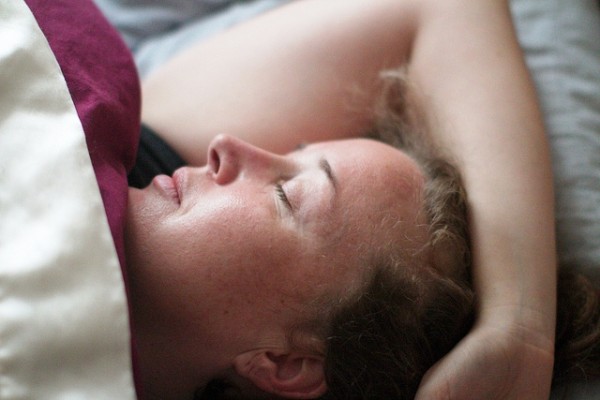Men and Women Have Similar Risk of Stroke from Sleep Apnea: Study

Men and women have equal risk of developing strokes from obstructive sleep apnea, finds a study.
Obstructive sleep apnea (OSA) is a breathing difficulty categorized with severe obstruction in the upper airway and inadequate supply of oxygen that repetitively occurs during sleep. Untreated, this condition can give rise to various health problems like increased blood pressure, headaches, impotence and cardiovascular diseases. Past clinical trials have shown that sleep apnea and strokes are more common in men than in women. In the recent research, experts found that women are at equal risk of a stroke induced by OSA.
"Some researchers and clinicians have theorized that because men may have OSA for longer periods of their lives compared to women, studies have been looking at populations with very different exposure times, and that therefore, the gender differences that have been apparent in past studies really just reflect inadequate follow-up time," said Suzie Bertisch, study author and sleep expert at Beth Israel Deaconess Medical Center, Boston, in a news release.
"Looking at one male and one female of specific age range, there's a good chance that the male population has been experiencing OSA symptoms for longer than the female population of the same age."
The study evaluated the association between both conditions in 5442 men and women of specific age group who were a part of the Seep Heart Health Study (SHHS). The participants underwent polysomnography, a type of sleep test that monitors brain function, respiratory system and muscle and heart activity during sleep. These subjects were divided according to the severity of apnea and followed for more than 11 years on average to note the impact of the sleep disorder on heart health.
The analysis revealed the odds of suffering stroke was 0.9 and 1 percent in female and male participants with mild sleep apnea patients, respectively. In women with severe sleep apnea, the stroke risk was 2.3 percent, and it was 3.1 percent for men of the same age due to the vascular effects and pressure on heart.
The authors believe these findings help overcome popular notions about gender disparity for OSA and stroke. The study results encourage early treatment and intervention strategies especially for female OSA patients to curb the incidences of heart diseases and strokes.
The research was presented at the 2014 American Thoracic Society International Conference.
May 26, 2014 04:10 AM EDT





